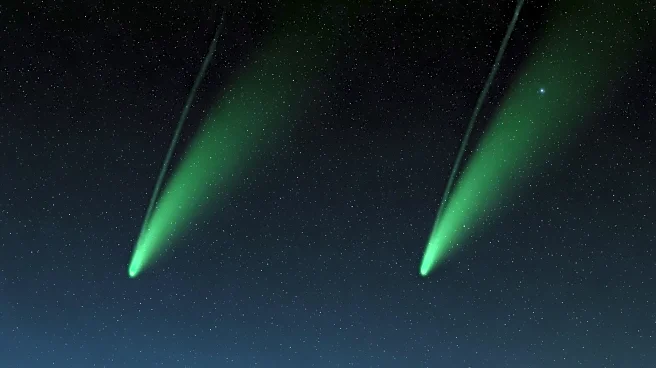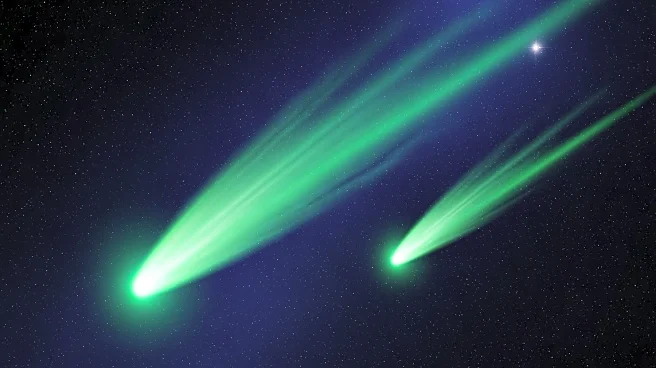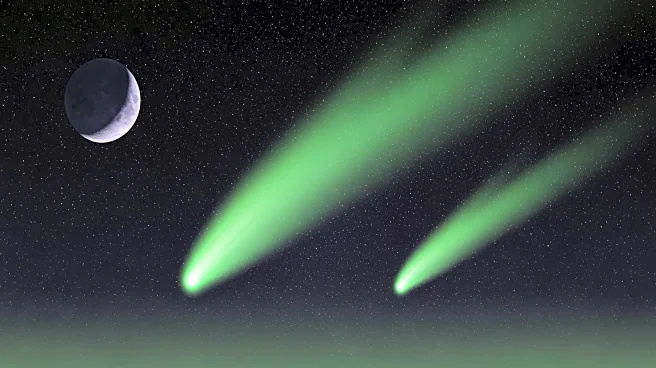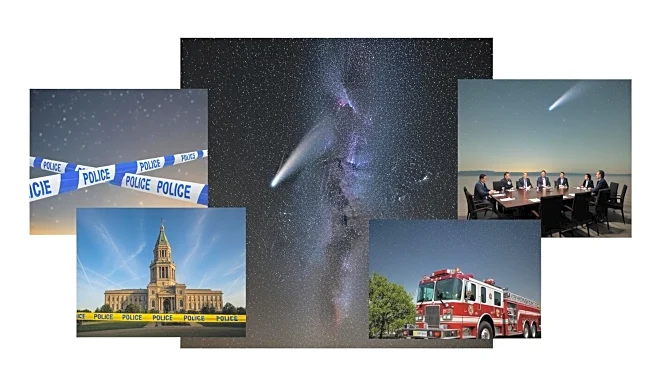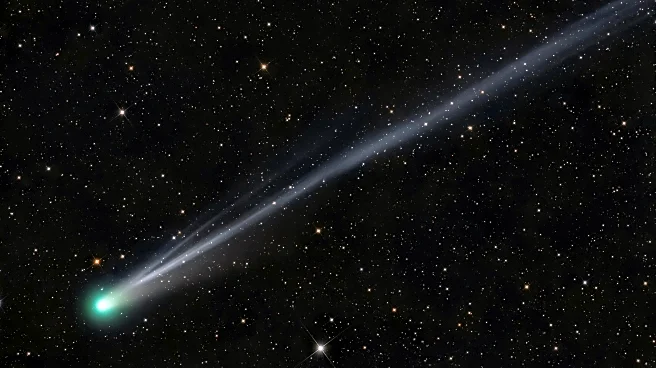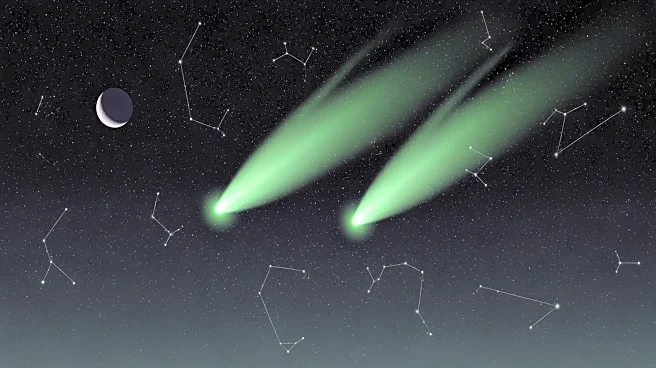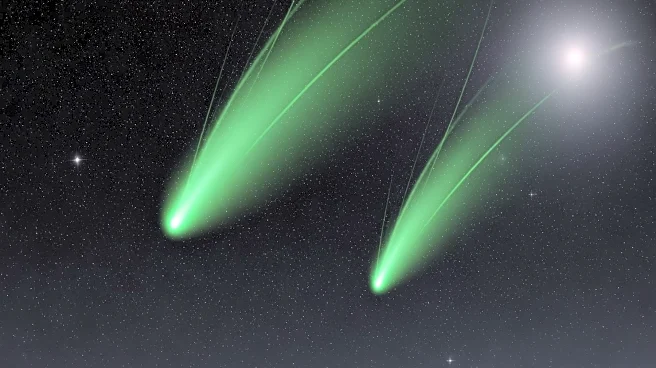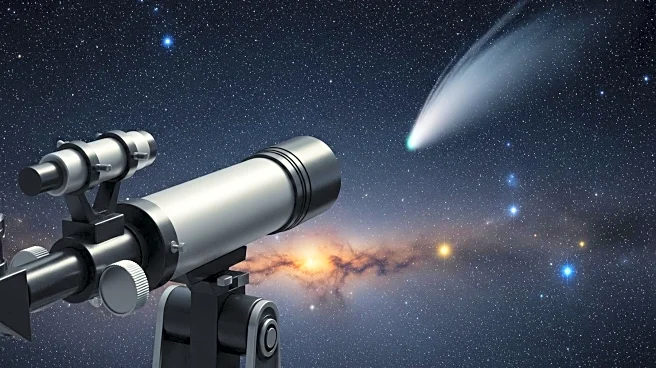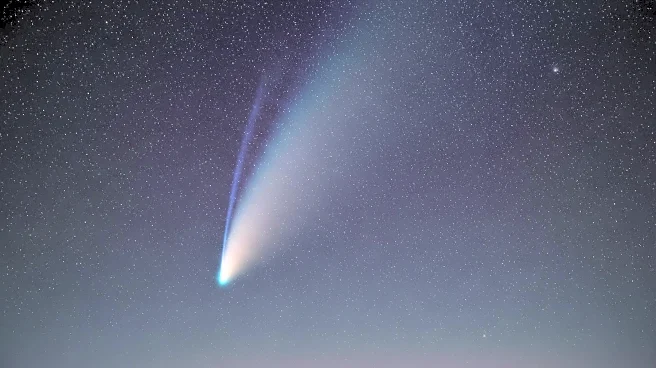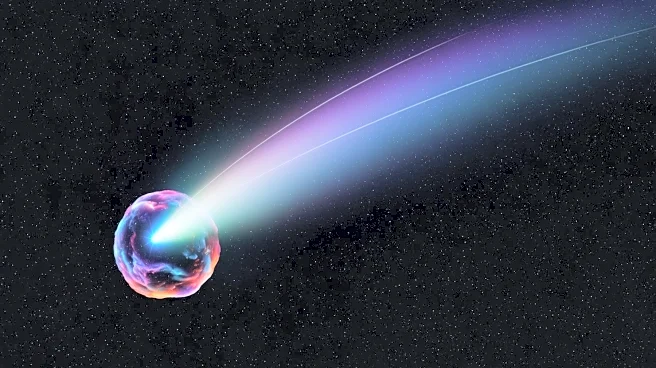What's Happening?
Two bright green comets, Comet Lemmon (C/2025 A6) and Comet SWAN (C/2025 R2), are currently visible in the night sky for observers in the Northern Hemisphere. These comets originate from the outer edges
of the solar system, possibly from the Oort Cloud, which is located beyond Pluto. Comet Lemmon is expected to have its closest approach to Earth around Tuesday, while Comet SWAN will fly by Earth on Monday. However, Comet SWAN is moving away from the sun and may become dimmer over time. Spotting two comets simultaneously without special equipment is rare, but not unprecedented, according to Carson Fuls, director of the University of Arizona-based sky survey that discovered Comet Lemmon. To view these comets, observers should look to the northern sky after sunset, with Comet Lemmon near the horizon and Comet SWAN to the southwest.
Why It's Important?
The visibility of these comets offers a unique opportunity for astronomers and enthusiasts to observe celestial phenomena that are typically rare. Comets are remnants from the solar system's formation billions of years ago, and their study can provide insights into the early solar system's conditions and composition. The green color of the comets is due to gases streaming off their surfaces, which can help scientists understand the chemical processes occurring as they approach the sun. This event also highlights the importance of ongoing sky surveys and amateur astronomers in discovering and tracking celestial objects, contributing to our understanding of the universe.
What's Next?
Observers can continue to watch these comets with binoculars through the end of the month, although their brightness may vary. Astronomers will likely monitor the comets' trajectories and brightness to gather more data on their composition and behavior. The event may inspire further public interest in astronomy and encourage educational initiatives related to space observation. Additionally, the discovery of these comets may lead to more collaborative efforts between professional and amateur astronomers in tracking and studying celestial phenomena.
Beyond the Headlines
The appearance of these comets underscores the dynamic nature of the solar system and the ongoing changes that occur within it. As remnants of the solar system's formation, comets like Lemmon and SWAN provide a tangible connection to the past, offering clues about the materials and conditions present during the early stages of planetary development. This event also highlights the role of technology and international collaboration in space exploration, as Comet SWAN was discovered using photos from a spacecraft operated by NASA and the European Space Agency.
